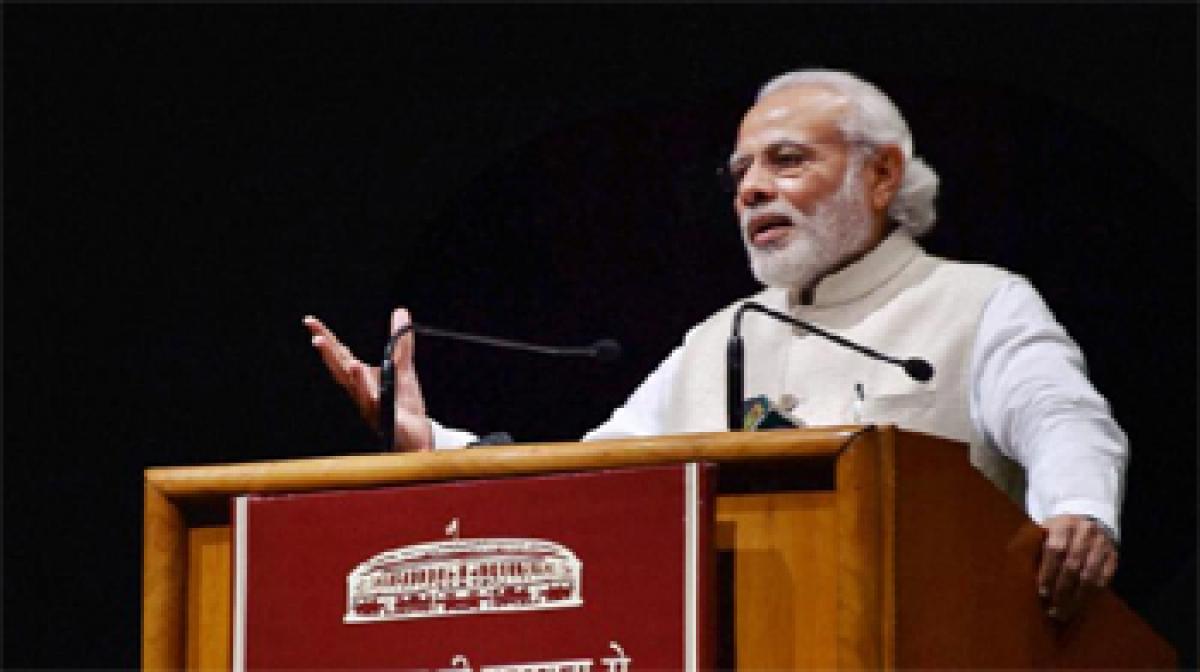Live
- Govt plans to establish offshore Johns Hopkins University Campus in India
- Goa Aces clinch Indian Racing League title
- Study finds how hormone therapy can reshape the skeleton
- High-street fashion players looking at India for manufacturing: Report
- Shreyas Iyer to lead Mumbai as Prithvi Shaw returns for Syed Mushtaq Ali Trophy
- 'Failed to resolve crisis': NPP withdraws support from BJP govt in Manipur
- Chennai: Actress Kasturi Remanded in Custody Until 29th of This Month
- Aaqib Javed likely to become Pakistan's new white-ball head coach
- BJP panel to draft poll charge sheet against AAP govt in Delhi
- Allu Arjun Thanks Fans in Patna, Teases 'Pushpa 2' Release
Just In

Like his father before him, Dattatatraya Kshirsagar, 80, has been looking forward for years to the day when a $65 million dam will be completed in his village, an hour-and-a-half drive southeast of Mumbai.
Like his father before him, Dattatatraya Kshirsagar, 80, has been looking forward for years to the day when a $65 million dam will be completed in his village, an hour-and-a-half drive southeast of Mumbai.
The dam would supply enough water to irrigate 1,000 hectares (2,470 acres) of parched land around it, including Kshirsagar's 2.5-hectare family farm in Kondhane village.
A steady water supply, instead of reliance on seasonal monsoon rains, would allow him to switch to cash crops and reap three harvests a year, instead of one now, Kshirsagar said.
Kshirsagar's family has been holding on to that dream since 1984, when the project was first proposed by the state government. "My family's income will more than double if they complete the dam," he said.
Prime Minister Narendra Modi is promising to do just that in the 2016-17 budget presented on Feb 29. His government has pledged nearly $13 billion on rural development, aiming to double farmer's incomes by 2022.
Irrigation is a centrepiece of that promise in a country where nearly half of the arable land depends on monsoon rains.
Modi's budget has allocated a record $18 billion in the federal budget to expand irrigation and recharge aquifers - two thirds of that could come from overseas loans
At stake are both Modi's political future and his growth ambitions. Most of India's 1.3 billion people live in the countryside and depend on agriculture to make a living.
Late last year, rising rural distress after back-to-back droughts contributed to an embarrassing defeat of Modi's ruling Bharatiya Janata Party in a state election. Global warming is making India's summer monsoon increasingly unpredictable, scientists say.
More crucial state elections are due in the coming months, including in West Bengal. India’s farm sector, which accounts for around 14 percent of gross domestic product, contracted by 0.2 percent in 2014/15, after growing by 4.2 percent in the previous year.
Sloth, Corruption, Uncoordination
Stalled projects like the Kondhane dam tell a cautionary tale for politicians making big promises.Successive federal governments have thrown billions of dollars over the years to fix the problem. But many of the projects stalled due to bureaucratic sloth, corruption, opposition to land acquisition and lack of coordination within the government.
More than 200 irrigation projects worth some $36 billion have been stuck for years. One irrigation project has languished for 40 years in eastern Uttar Pradesh, which goes to polls next year. The delay has increased the cost of the Durgawati project by eight times to 8 billion rupees ($119.15 million), a source at the Water Resources ministry said.
"Every year, a large amount of funds allocated for irrigation lie unutilised and that's because of lethargy, red tape, inept administration and a lack of political will," said Ashok Gulati, an agricultural economist, who formerly advised the government on crop prices.
Poor coordination between New Delhi and the states is one of the biggest challenges. Other than the ministries of farm, water resources and rural development, nearly half a dozen departments of state governments are also involved in each project, making coordination and implementation tricky and time consuming.
"It's a case of too many cooks," said Devinder Sharma, an independent farm and trade policy analyst.
Depleting groundwater
Only 64 million hectares of the 142 million hectares of farm area under crops in India are irrigated. Surface irrigation projects cover only 25 million hectares of that total.
Nearly 60 percent of the irrigation for farms now comes from ground water, mainly through electric water pumps. Subsidised electricity gives farmers an incentive to pump out more water, a key reason behind fast depleting water tables.
That has lent an added urgency to speed up the surface irrigation projects. Modi's administration has decided to focus initially on 46 of the stalled surface irrigation projects. It has set a deadline to complete half of those by March 2017 and the other half by 2020, according to the 2016/17 federal budget.
The 23 projects will help bring an extra 1.3 million hectares under irrigation.The remaining 150 or so projects that are stalled – like the Kondhane dam - have no timeline yet, as the government tackles the biggest ones first.
At the dam project site in Kondhane, nearly two dozen dumpers and a dozen excavators remain parked in a row, idle and covered in blue tarp with the Western Ghats mountain range in the backdrop.
After the Maharashtra state government first conceived the Kondhane dam, it took 27 years to get the necessary approvals from various government departments to start excavating the site.
Work started in earnest in 2011, but a year into it, the project got stuck again, in legal troubles this time, including environmental concerns about the impact of the dam. The matter is now before a court. The state's anti-corruption bureau is also investigating graft charges.
The cost of the dam, meanwhile, has increased to 4.35 billion rupees from 80 million rupees when it was first conceived.

© 2024 Hyderabad Media House Limited/The Hans India. All rights reserved. Powered by hocalwire.com







